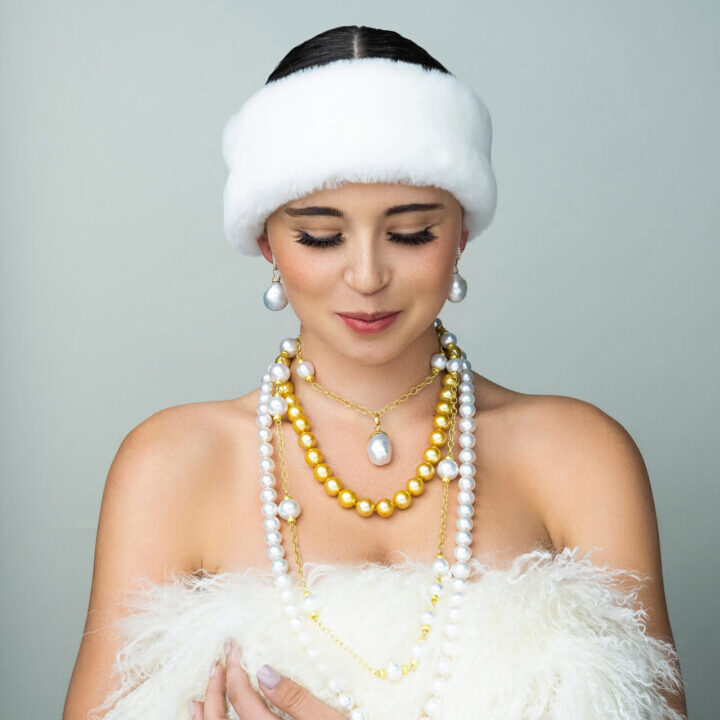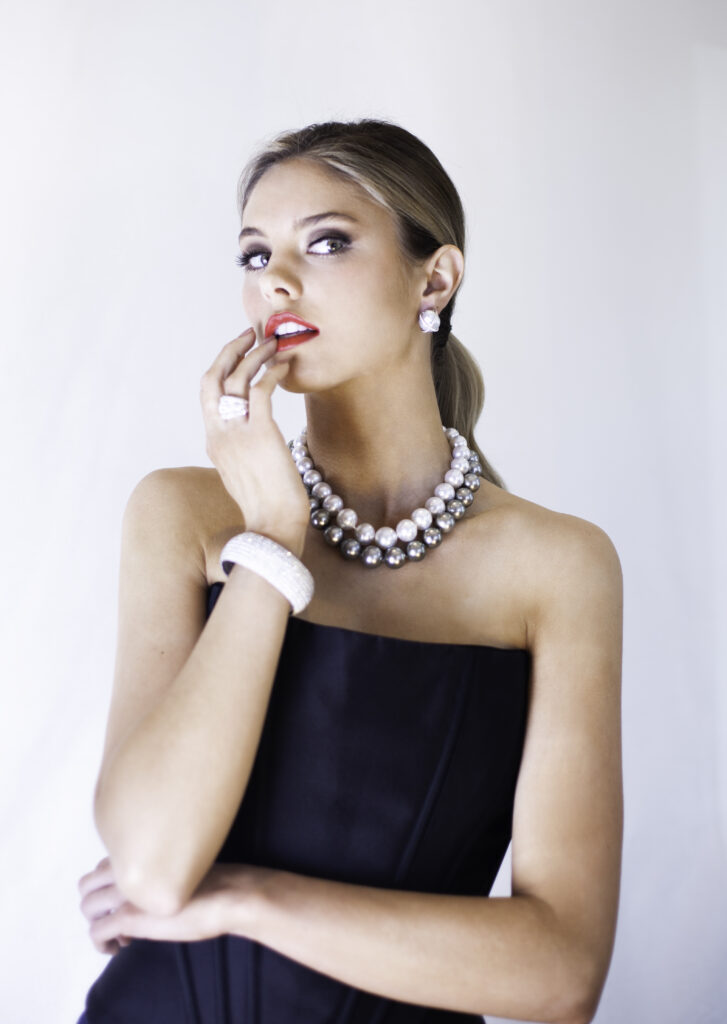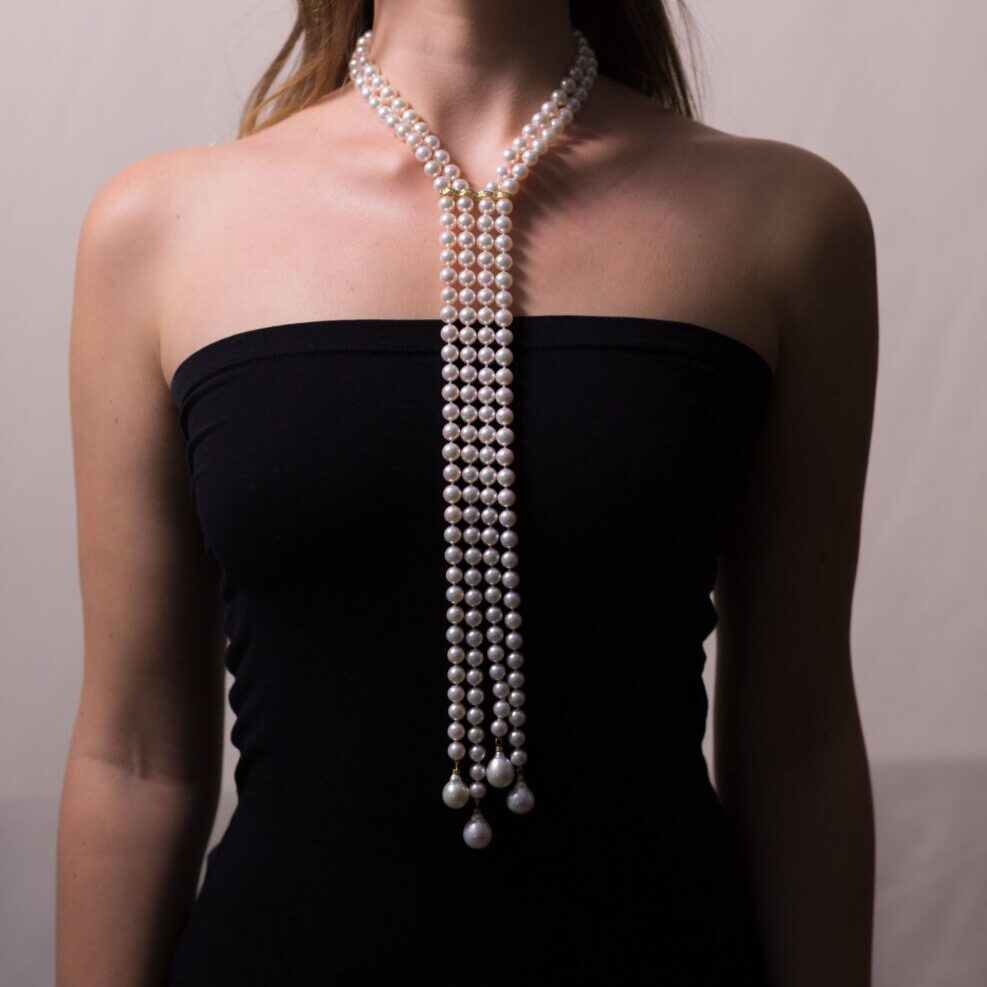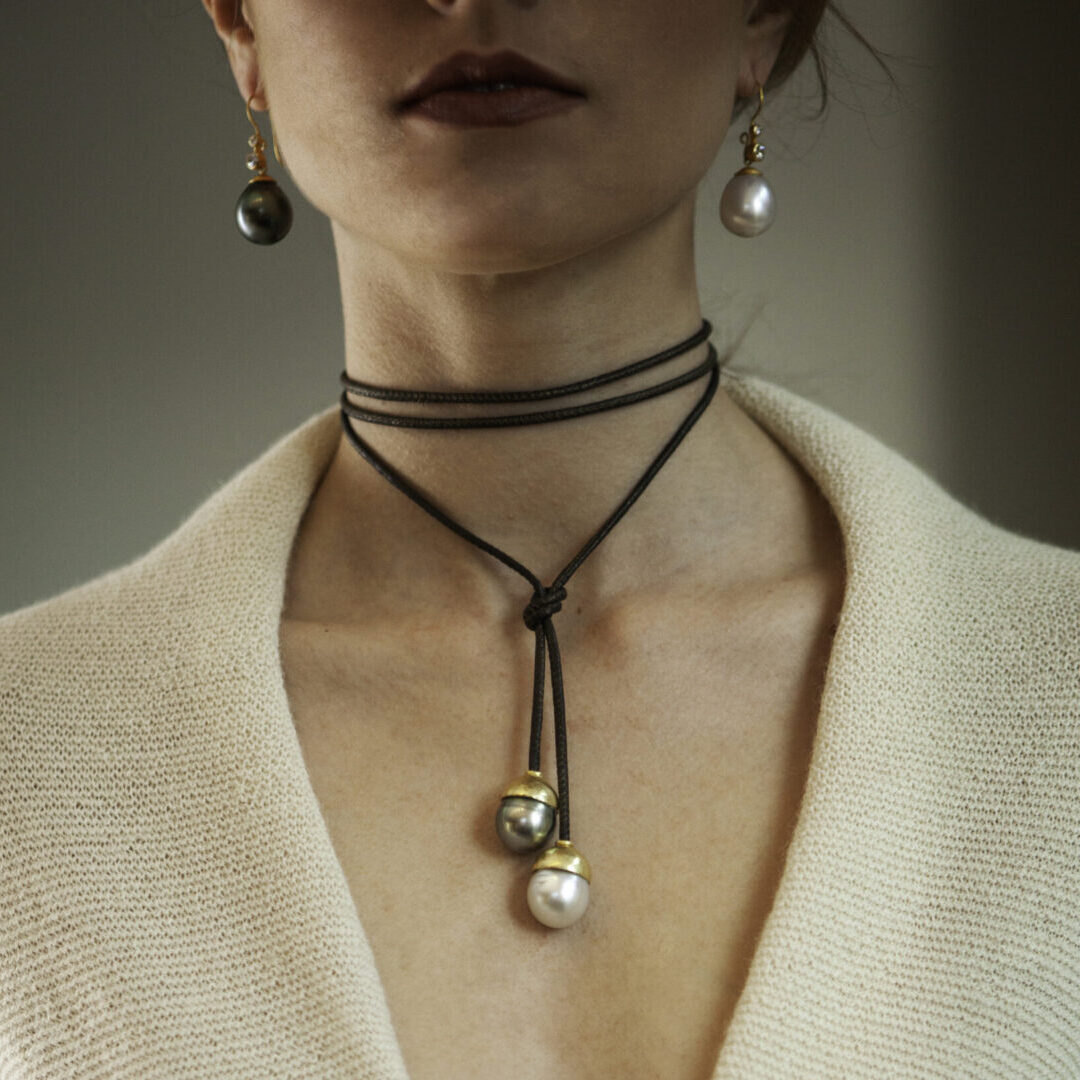About Your Pearls
Keshi Pearls
Keshi pearls are unique pearls that are a by-product of pearl cultivation. They are small, non-nucleated pearls that are 100% pearl, made entirely of nacre and have no nucleus. The name "keshi" comes from the Japanese word for poppy seed, "keshinomi". These pearls are very distinctive in shape and size, and can sometimes have a flat or fat appearance, with a wavy-like surface texture.
Keshi pearls form when an oyster is nucleated with a piece of tissue and a bead in a cultured pearl farm. If the mollusk expels the bead, or the tissue piece and bead separate, nacre will not form around the bead, and a keshi pearl might be produced instead.
Keshi pearls can form in both fresh and salt waters, and are mostly farmed in Tahiti and Australia.
South Sea Pearls
South Sea pearls are considered to be one of the most luxurious types of pearls. These pearls are cultured in a saltwater oyster called Pinctada maxima, which is native to the marine waters between the Indian and Pacific Oceans.
South Sea pearls are the largest type of cultured pearls, with a diameter typically ranging between 8mm and 16mm. Each pearl takes around 2 to 3 years to grow inside the oyster, and should have a soft silky lustre. South Sea pearls are usually round or symmetrical in shape and have a bead-nucleated structure.
The gold-lipped oyster, grown off the coasts of the Philippines and Indonesia, typically produces naturally golden pearls with varying light to deep hues of yellow and orange. South Sea pearls are highly valued for their exceptional quality and are often used to create the finest jewelry. They are unique gemstones known for their large size and remarkable luster.


Tahitian Pearls
Tahitian pearls, despite their name, are not actually from Tahiti. Tahiti serves as the main trading post for atolls that produce Tahitian pearls.
Black-lip pearls are farmed in French Polynesia, the Cook Islands, the Micronesian Islands, and to some extent, in Japan, Thailand, and the Philippines. However, only those black-lip pearls grown in French Polynesia can be called Tahitian pearls.
Tahitian pearls were once the rarest and most valuable pearls in the world. Although they continue to be more valuable than freshwater and Akoya pearls, the pearl farming market has made Tahitian pearls widely available and affordable.
Tahitian pearls are bead-nucleated. This means that the farmer will insert a round shell bead inside the oyster to encourage the formation of a round-shaped pearl. However, less than 50% of these pearls will form a perfectly round shape. The other shapes that they may form are round, baroque, or circle. Regardless, Tahitian pearls are renowned for their uneven shapes and exotic hues.
Interestingly, the location where the pearl forms inside the shell determines its color. If the pearl forms near the inner part of the shell, it will have a darker color. If it forms towards the outer section, it will have a gray or silver color.
Akoya Pearls
The name "Akoya" comes from the Japanese word for oyster, "akou."
Akoya pearls were the first cultured pearls ever created, and they are known for their perfect roundness. They range in size from 3mm to 8mm and are traditionally white, with slight variations of rose, cream, and silver overtones. Despite saltwater pearl oysters producing pearls in various hues, the white Akoya pearl remains the most popular choice for jewelry enthusiasts.
Thanks to their timeless elegance, Akoya pearls have been adorning royalty and celebrities for centuries. They are a popular choice for classic pearl strands, but baroque varieties are also famous for their contemporary look. Whether you prefer a traditional or modern design,
Akoya pearls can elevate any outfit and are a staple in any jewelry collection. It's worth experimenting with different shades of Akoya pearls to find the one that suits you best.

Pearl Care
Pearls Can Last a Lifetime
It's important to remember that pearls should never be cleaned using an ultrasonic or steam cleaner. For occasional and thorough cleaning, it's best to use warm, soapy water. If the pearls are strung, ensure that the string is completely dry before wearing.
To maintain the luster of pearls, it's recommended to wipe them with a very soft, clean cloth after each use. Additionally, wiping the pearls with a damp, soft cloth after use will help prevent harmful build-up of compounds that may damage the nacre of the pearls.
To prevent scratches, always store pearls separately from hard jewelry items such as rings or bracelets. It's better to keep pearls in a soft cloth pouch or a soft-lined jewelry box.
It's important to note that personal care products such as cosmetics, sunblock, perfume, and hairspray contain chemicals that can dull the luster of a pearl.
The natural acids present in body oils and perspiration can also damage pearls in the same way.
It's recommended to apply personal care products at least 30 minutes before putting on pearls and to remove them before going to bed.
Remember that pearls should be the last thing to put on and the first thing to take off.

